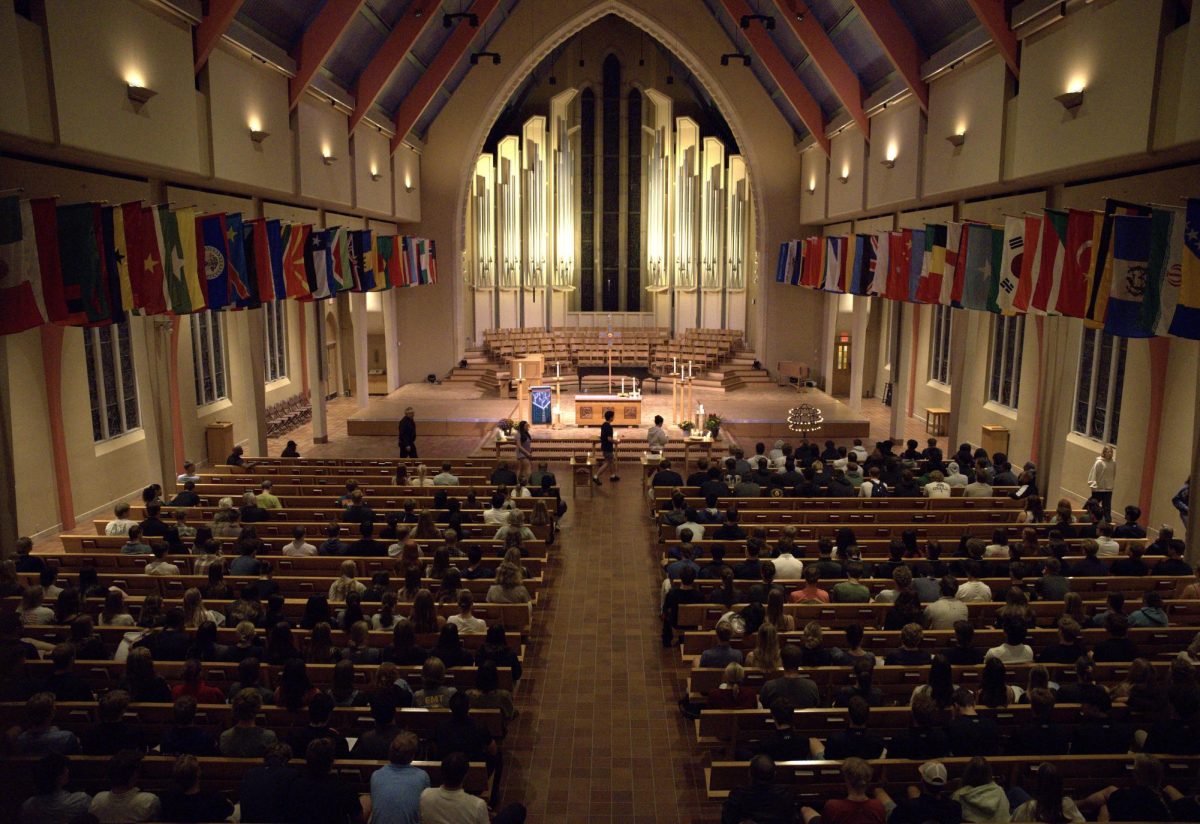The walls, door and desk of Associate Professor of Biology John Giannini’s office are covered with photos of and pictures by his four sons, wife and brand-new granddaughter, Gloria. His face lights up when he talks about them, and academics take a backseat to the importance of family.
“I enjoy what I do, but I really like being with my kids and my family, so I try to keep it in perspective,” Giannini said.
Giannini explored a variety of fields and positions before coming to St. Olaf. He had five different majors while earning his undergraduate degree, and he decided to work with youth in outdoor education after graduation. He soon switched gears, starting a career in carpentry and then later did metals processing for an electronics company.
“Unlike a lot of people who go into academics, I didn’t plan this,” Giannini said. “I met my wife, got married, and decided I needed to get more education.”
The professor earned his Ph.D. in biology and biochemistry at Utah State University. From there he was forced to decide whether he wanted to do research at a large university or teach at a small college.
“I bounced around, and I think the one consistent thing is that I like to teach; I like working with students.”
Giannini is now entering his 30th year of teaching at St. Olaf, and he has done quite a bit during his time here. In the classroom, he currently focuses primarily on plant physiology, cell biology and genetics, and “Thinking and Doing Biology,” a course offered for non-majors during interim and summer sessions.
“I am very fond of the students here at St. Olaf,” Giannini said. “I thoroughly enjoy classroom teaching.”
In addition to teaching, the professor does some research, which has ranged from studying native plant species to his more recent OPN LAB project which develops affordable alternatives to laboratory equipment. One of his inexpensive inventions, the $250 epifluorescence microscope, got published in the Journal of Chemical Education. But that’s not Giannini’s only design, nor the only place to find it.
“We open source everything,” Giannini said. “The lab’s goal is to design cheap equipment and then provide inexpensive experiments, so literally anybody anywhere in the world could do science if they wanted to.”
With only a few companies in the industry, science equipment tends to run at highly inflated costs. Regular buyers of a epifluorescence microscope could expect to pay around $20,000 – almost 100 times the price of Giannini’s homemade solution. The materials, plans, experiments and example images can all be found on OPN LAB’s web site. Other equipment designs include an incubator made from a dorm refrigerator, a slow cooker converted into a hot water bath and a compound light microscope built using primarily PVC materials.
Giannini and continuing education student Chris Stewart worked to develop the open-source web site, with the mission of “making science education and scientific inquiry more open and accessible for others, especially those who may lack the funds for more expensive equipment or materials.” They hope their work can reach people in need, from less economically developed countries to inner-city schools.
The OPN LAB project does not just provide information; the site also encourages individuals to study scientific processes and basic design and engineering skills. Giannini holds the philosophy that knowledge should be accessible, which he further promotes by sharing a page of biological animations that he made with his son. The web site went viral, becoming the top hit for “biological animations” on Google, and has received international attention.
“I’m kind of going on the same model, that I’m just going to put it out there and see if it’s useful, if people use it.”
When he’s not teaching or designing, Giannini can likely be found with his family, hunting or working on a new project. He and his wife are self-described “perpetual entrepreneurs” who travel to craft and art shows to sell their projects. In the future, they hope to open a store with upcycled products and spend lots of time with their children and grandchildren.


